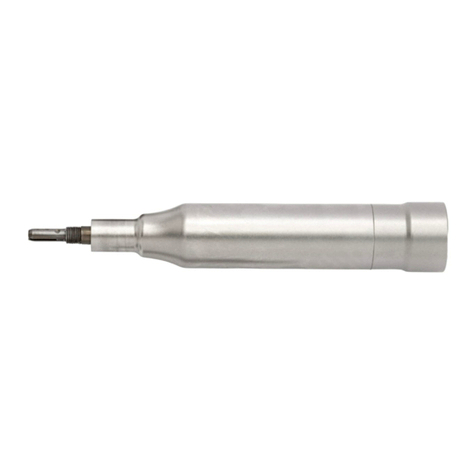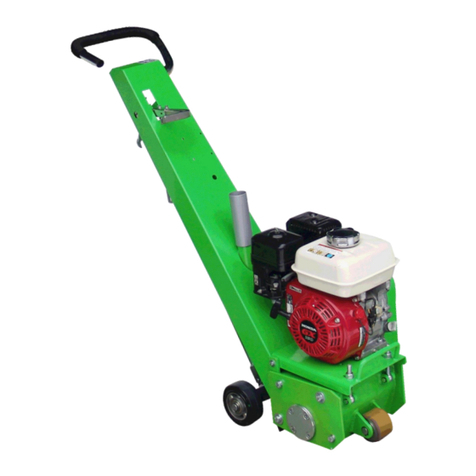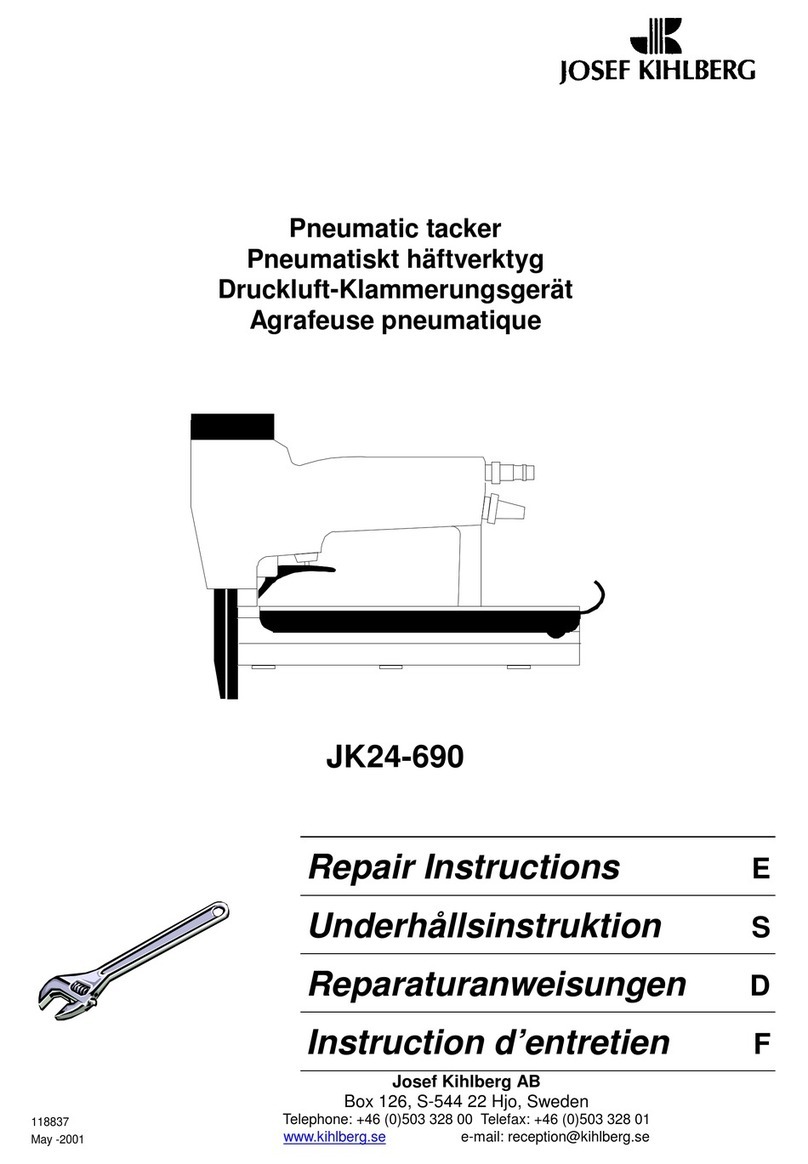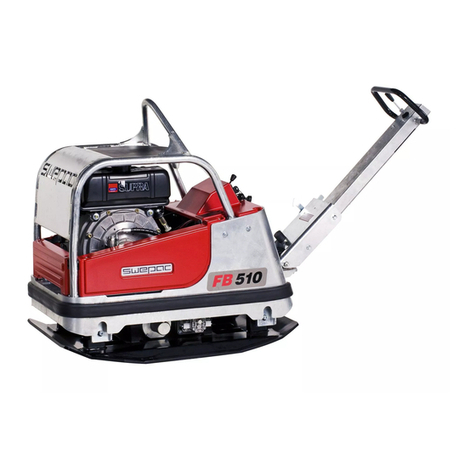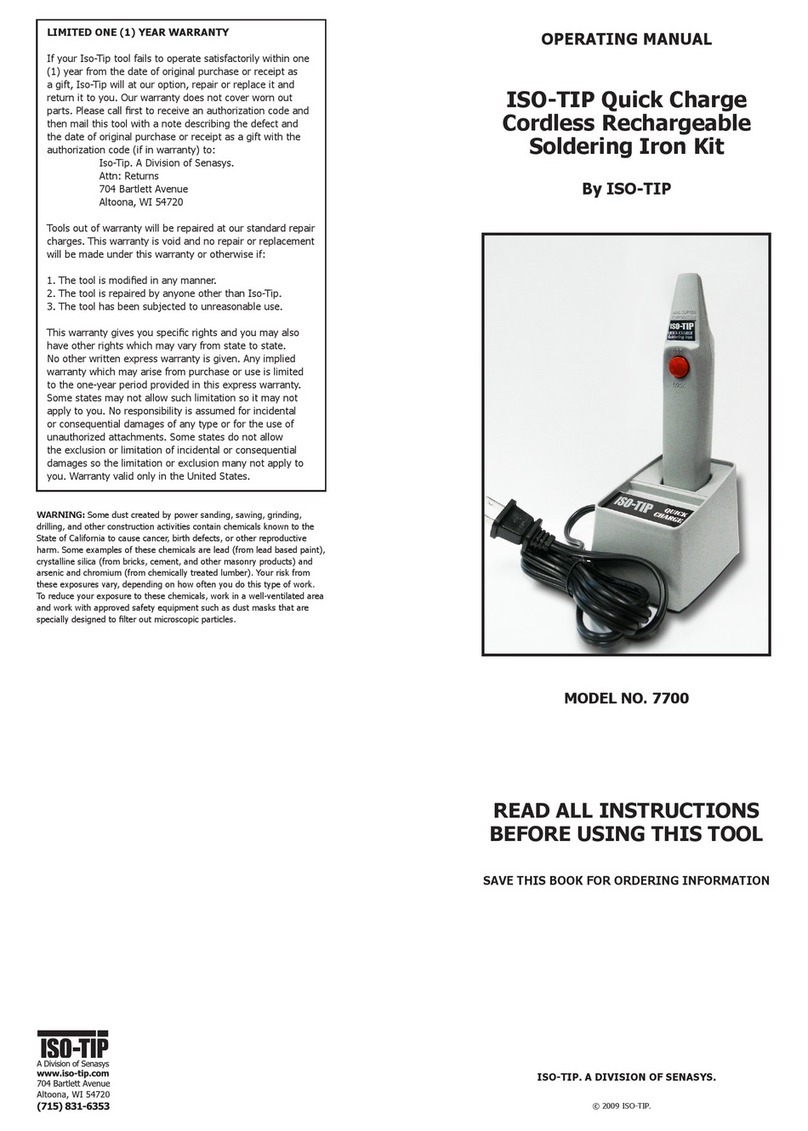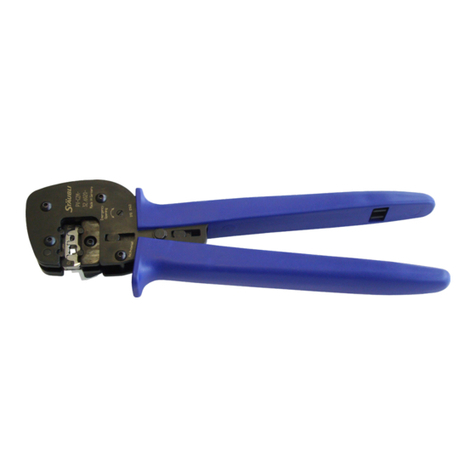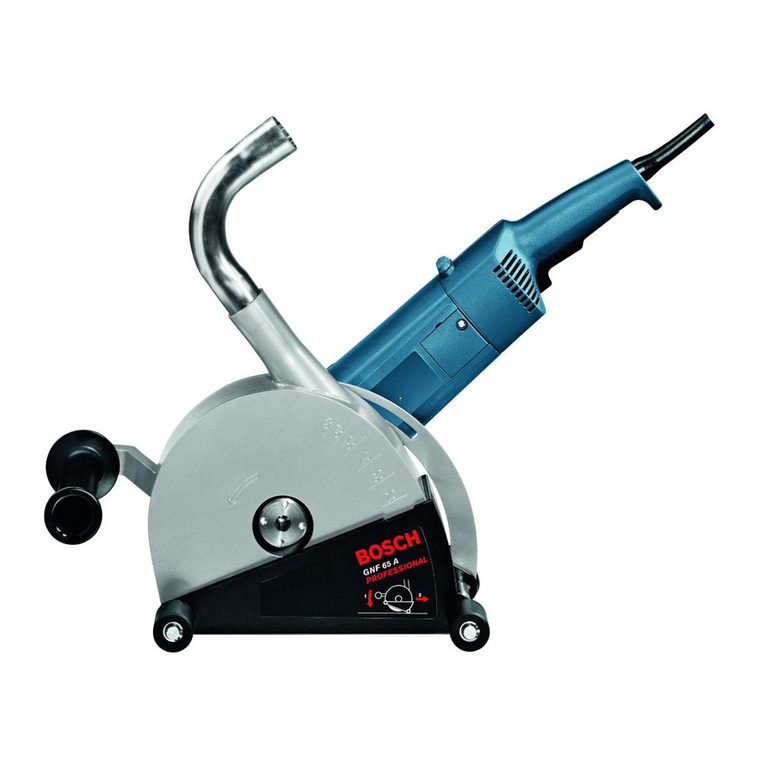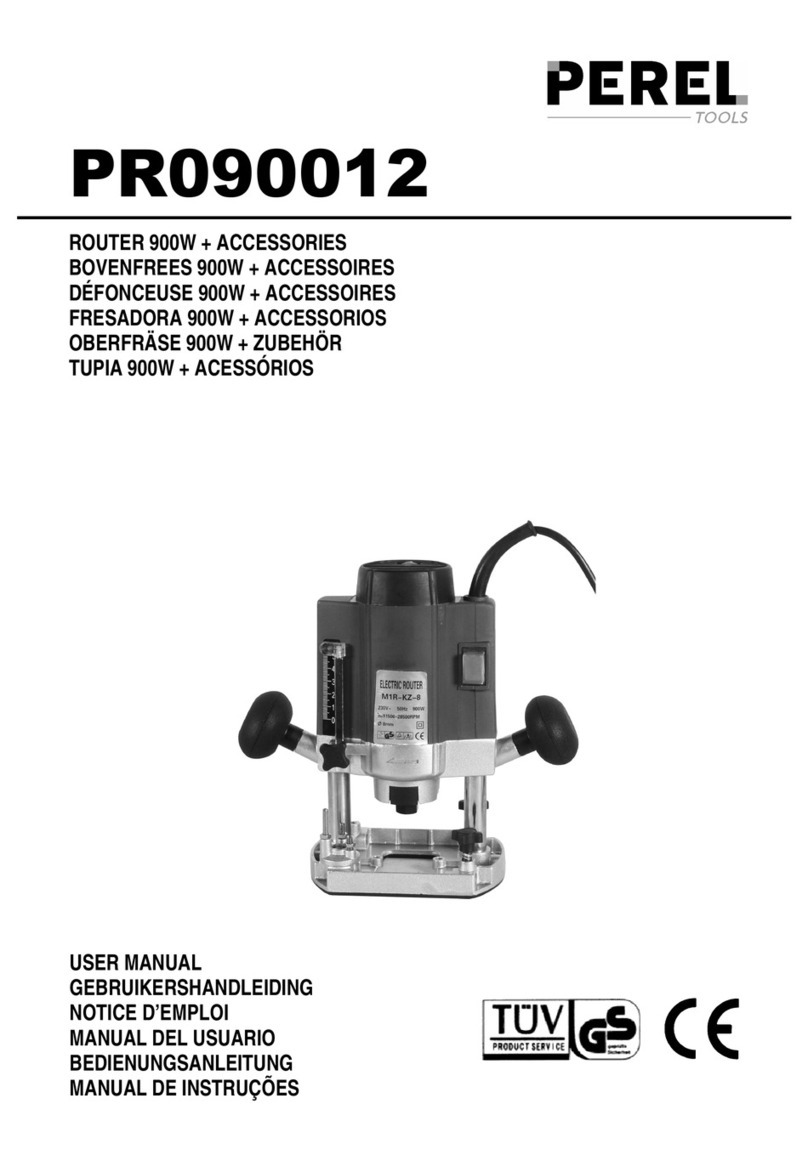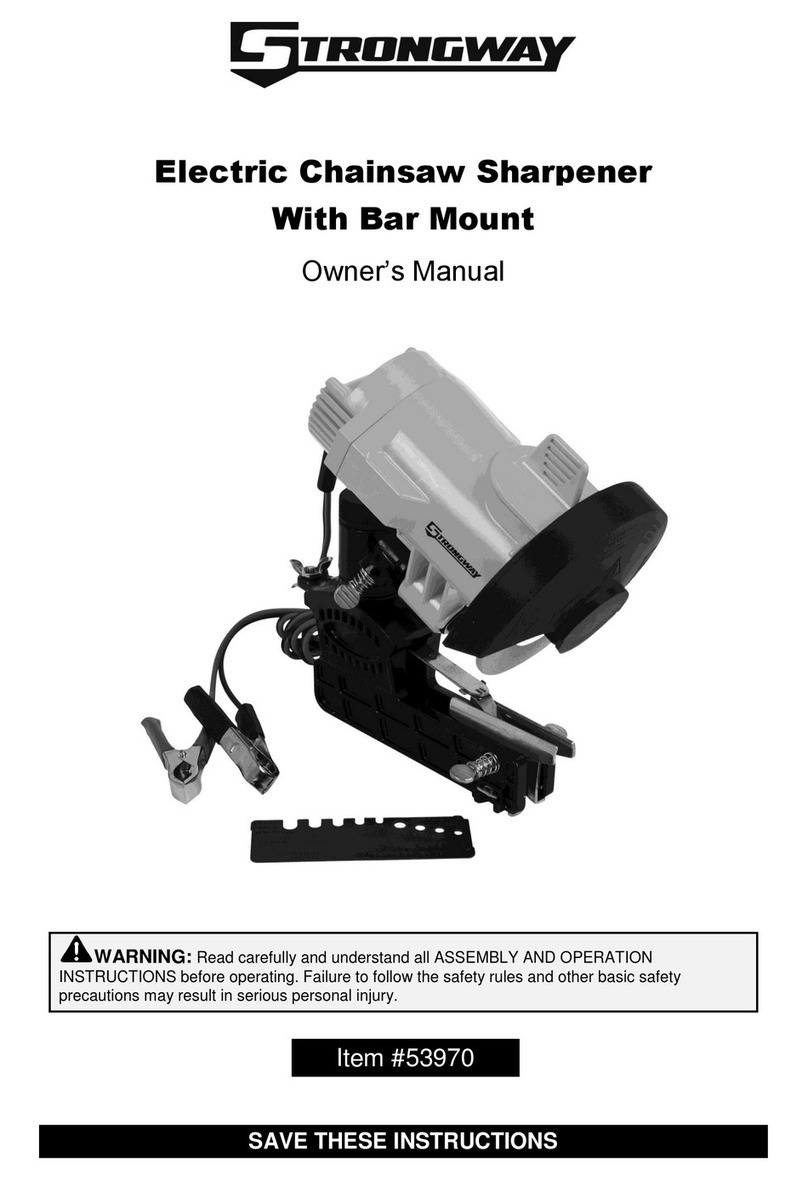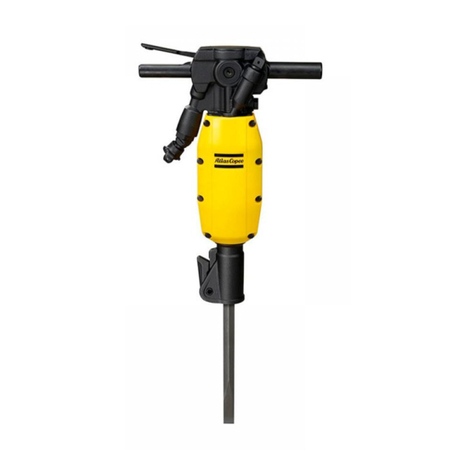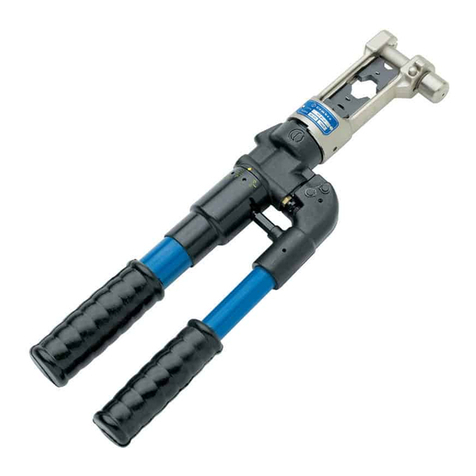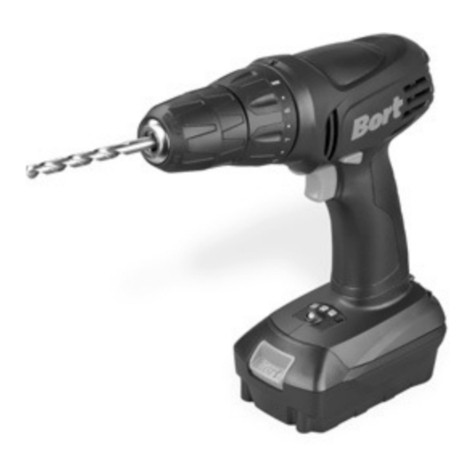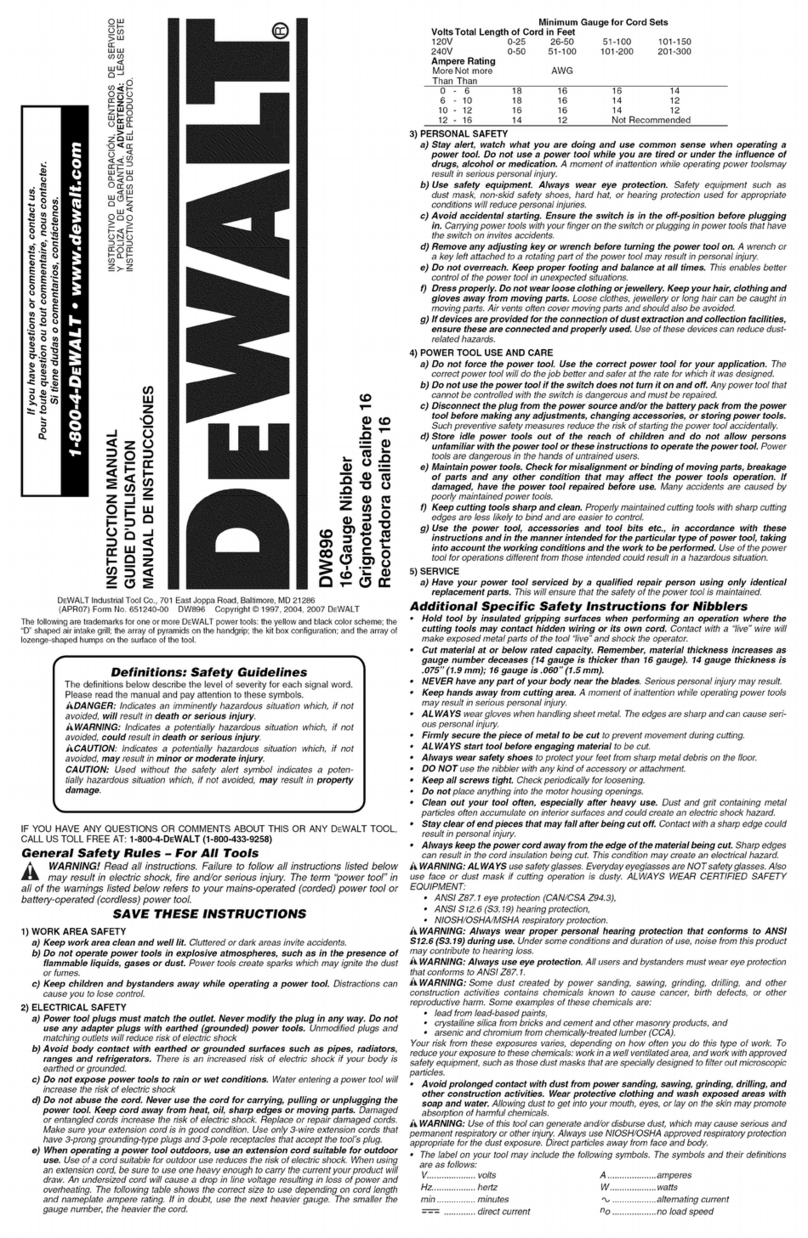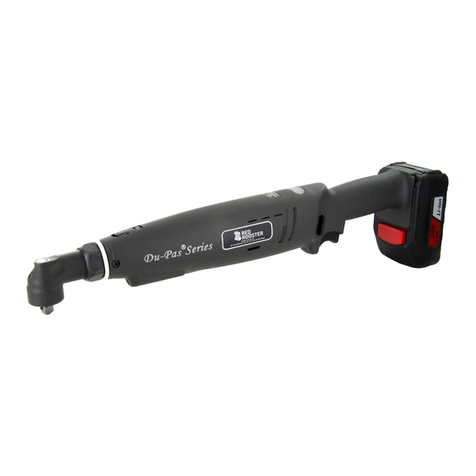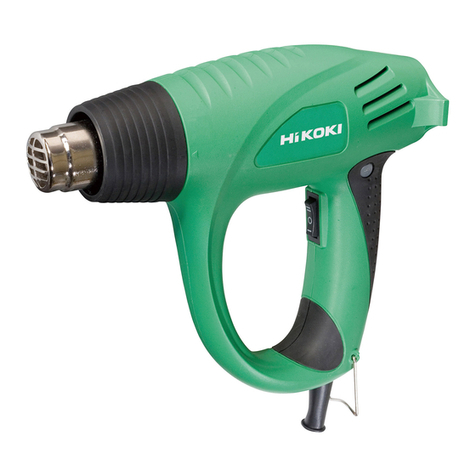Nouvag MSS 5000 User manual

©NOUVAG AG • 31893 • V20230412 • All rights reserved
Micro Jigsaw MSS5000
EN
Instructions for use
Reprocessing
restrictions
Frequent reprocessing has only a limited impact on the handpiece. The end of the products service life is normally determined by wear
and damage through use. The instrument is designed for sterilization cycles.
General handling . The micro jigsaw must be thoroughly cleaned, disinfected and sterilised before initial operation (products straight from the fac-
tory) and also immediately following each use. Only a cleaned and disinfected instrument permits proper sterilisation!
. The electronic motor should always be treated with utmost care when being transported, cleaned, serviced, sterilised and stored.
. We recommend the use of mild alkaline and enzymatic cleaners with as low a content of silicate as possible in order to avoid staining
(silicatising) the instruments.
. Only commercial grade DGHM-/VAH-listed agents may be used for cleaning and disinfection. See these agent manufacturers’ specifi-
cations for the method of use, action time and suitability of disinfection and cleaning substances.
. Follow precisely the operating instructions of the devices and chemicals etcetera, used during preparation.
. Adhere exactly to the chemical dosages, action times and exposure temperatures during cleaning and disinfection.
. The end of the products service life is determined by wear and damage through use. For the micro jigsaw it can be reached even
before the sterilization cycles, that they’re designed for, due to wear and tear.
. Do not overload washer. Avoid rinsing blind spots. Pay attention to secure storage in the machine.
. Follow the applicable regulations in your country for reprocessing medical devices.
. Only the cooling clip may be cleaned in an ultrasonic bath. The micro jigsaw must never be subjected to ultrasonic cleaning! This
will impair the functionality.
. NOUVAG recommends using a screen basket with a rinse strip from mach (NOUVAG REF ), a re-usable container for comfort-
able preparation and storage (including transport) of products. The screen basket can be used to keep products safe both during
the rinsing cycle and also during and after sterilisation until the products are used. The screen basket is suitable for use with sterili-
sation paper or a rigid sterilisation container. It has no barrier effect itself in order to maintain sterility.
Preparation at the
point of use
After surgery immediately remove blood, secretion, tissue and bone residue with a disposable cloth/paper towel, do not allow to dry!
Dried residues cause corrosion.
Safe-keeping and
transport
Contaminated products must be stored and transported to the preparation site in a closed container to avoid damaging the products
and the contamination of the environment.
Cleaning and
disinfection,
pre-cleaning
Remove saw blade, cooling tube, clips for the cooling tube attachment and cooling clip from the micro jigsaw handpiece.
. Wipe visible impurities with a moist expandable cloth/tissue paper from the micro jigsaw and accessories.
. Brush the handpiece and accessories under running tap water using a soft brush (manufacturer for example Insitumed GmbH,
REF MED.).
. Rinse the outer surface of the micro jigsaw handpiece for seconds with a water pistol (at a pressure of at least .bar; manufac-
turer for example HEGA Medical, REF or REF ). Local tap water is sufficient for this purpose, since the last step is always
a machine cleaning with deionized water, so possibly hard water with lime traces from the pre-cleaning cannot remain on the
handpiece.
. Rinse the cooling clip with a cleaning gun with a jet nozzle attachment (manufacturer for example HEGA Medical, REF ) for at
least seconds.
SYMBOLS
General warning sign Observe instructions for use Note Suitable for thermal
disinfection
Manufacturer Date of manufacture Autoclave at 134°C Separate collection required
(WEEE)
Batch code Catalog number Serial number Authorized representative in
the European Community
0197
European Conformity mark
OVERVIEW
Cooling clip
Handpiece
Hook spanner
Coupling for
motor attachment
Fastening nut
ColletSaw blade
with shank
POSSIBLE COMBINATIONS
REF CONTROL UNIT INTENDED USE
MD 30 Dental Implantology
HighSurg 30 Plastic Surgery
Spinal Surgery
ENT Surgery
Hand and foot surgery
HighSurg 11 OFA-Drill Foot surgery
TCM 3000 BL Dermabrasion and Reconstructive Surgery
Rhinoplasty
SAFETY INFORMATION
Prior to using the device, before startup, and before operation, the user must always ensure that the device and accessories are in good working order and are
clean, sterile and operational.
The use of the product other than that for which it was designed is not permitted. The responsibility is solely carried by the operator.
The use of third-party products is the responsibility of the operator. Functionality and patient safety cannot be guaranteed with third-party accessories.
Manipulate the instrument only when the motor is at a standstill.
Improper use or repair of the device, or failure to observe these instructions, relieves NOUVAG from any obligation arising from warranty provisions or other
claims.
Do not close the clamping mechanism without a saw or a pin inserted in the collet.
The device shall only be operated by qualified and trained personnel
REPROCESSING INSTRUCTIONS
In relation to patients with Creutzfeldt Jakob disease or its variant (vCJK) no responsibility can be assumed for re-use of the micro jigsaw. The Robert-Koch
Institute recommends removing used products from circulation after use in order to avoid infecting other patients, users and third parties.
Twist protection lock with release
button.
Handpiece coupling with groove
for twist protection.
Align groove at handpiece with the twist protection
and connect handpiece with electronic motor by press-
ing the button. Check for proper seating.
Press the button and decouple handpiece from
electronic motor.
Loosen fastening nut with hook
spanner
Continue opening the nut with
your fingers.
Remove the saw blade from the
collet and replace if necessary.
Loosen the cooling clip by pulling
while turning it back and forth.
Remove the cooling clip from the
saw handpiece.
DISASSEMBLY AND ASSEMBLY OF THE COMPONENTS TO REPLACE THE SAW BLADES AND TO FEED THE COMPONENTS INTO THE REPROCESSING
OPERATION
COUPLING HANDPIECES WITH A GROOVE WITH THE ELECTRONICMOTOR21 WITH TWIST PROTECTION LOCK
MEDICAL INDICATIONS
MSS5000 is used with a saw blade (instrument) to cut and remodel bones in the
following medical indications:
// ENT surgery // Maxillofacial surgery // Plastic surgery // Neurosurgery
// Hand surgery
CONTRA INDICATIONS
Contra indications are the those generally indicated for the specific medical indi-
cation, and those for active medical devices.
SIDE EFFECTS
Main side eect of surgical saws is ostheonecrosis, caused by saw blade speed
and vibration.
INTENDED USERS
Intended users are trained and qualified personnel, in professional settings (e.g.
hospital, ambulatory).
TARGET POPULATION
The target population includes both minor and adult patients, depending on the
medical indication.
AMBIENT CONDITIONS TRANSPORT AND STORAGE DURING USE
Relative humidity max. % max. %
Temperature – °C – °C
Atmospheric pressure – ’ hPa –’ hPa
INTENDED PURPOSE

0197
©NOUVAG AG • 31893 • V20230412 • All rights reserved.
MANUFACTURER AND SERVICE POINTS
A complete list of NOUVAG certified service points are found on the NOUVAG
website: Nouvag.com > Service
POST MARKET SURVEILLANCE
In the event of incidents related to the use of the medical device,
please contact immediately the manufacturer by email
To provide adequate information, please compile the incident question-
naire at the web address
Nouvag.com > Contact us > Incident questionnaire.
Switzerland
NOUVAGAG
St. Gallerstrasse 25
9403 Goldach
Phone +41 71 846 66 00
www.nouvag.com
Germany
NOUVAGGmbH
Schulthaissstrasse 15
78462 Konstanz
Phone +49 7531 1290 -0
info-[email protected]
www.nouvag.com
Cleaning Mechanical cleaning
. After pre-cleaning place the micro jigsaw and its accessories in the
strainer basket.
. Mechanical cleaning is only successful if the pre-cleaning, described above,
is adhered to!
. Cleaning is done using the Vario TD programme in the cleaning and dis-
infection unit (CDU). For the cleaning process it is advisable to use DI
water (fully desalinated water).
. After completing the cleaning programme (inc. Thermal disinfection)
check the micro jigsaw, the nut and the cooling clip for visible contami-
nation in grooves and gaps. Repeat the cleaning cycle, if necessary.
Automatic cleaning process (Vario TD programme)
. Pre-clean with cold water for minutes.
. Empty
. Clean for minutes at °C with . % alkaline or at
°C with . % enzymatic cleaner.
. Empty
. Neutralise with cold water for minutes.
. Empty
. Inter-rinse for minutes with cold water.
. Empty
Disinfection Mechanical disinfection
The cleaning/disinfection unit has a thermal disinfection programme which
follows after the cleaning. When performing mechanical thermal disinfec-
tion, give due consideration to the national requirements relating to the A
value (see DINENISO-). We recommend an A value of . for the
instrument. Disinfection must be carried out with DI water.
Warning
When inadequately rinsed or exposed to the disin-
fectant or detergent for too long, the instrument can
corrode. Please see the corresponding detergent and
disinfectant’s package insert for dwell times.
Drying Mechanical drying
Dry the micro jigsaw using the cleaning/disinfection unit’s (CDU) drying cycle.
If required, manual drying can also be achieved by using a lint-free cloth.
When drying manually, take particular care with the grooves and gaps of the
instrument. Then spray the instrument again with Lubrifluid.
Every CDU must provide a corresponding drying procedure through the
manufacturer (see ISO-). Please follow the corresponding CDU-manu-
facturer’s directions and operating instructions.
Manual drying
Set up the micro jigsaw in an upright position without
the nut and the cooling clip attached.
Dry the instrument for at least minutes. Then spray
it with Lubrifluid. Afterwards reassemble the nut and
the cooling clip back onto the instrument.
Manual
cleaning and
disinfection
. Immerse the micro jigsaw handpiece after pre-cleaning for minutes in a bath with enzymatic
cleaner. Clean accessories such as e.g. the cooling clip and the nut for minutes in an ultra-
sonic bath. Follow the instructions of the manufacturer of the detergent.
. Perform a complete post-clean of the product under running drinking water, using a soft brush.
Intensely rinse, if there is any cavities and lumens existing, with a water pressure gun (or simi-
lar) for at least seconds.
. To remove the detergent, rinse the products under running city water (drinking quality) for at least
seconds.
Warning
Do not clean micro jigsaw
(handpiece) in an ultrasonic
bath!
Manual
disinfection
After cleaning, immerse the products for minutes in a bath with a suitable disinfectant. It must be ensured that all surfaces are com-
pletely wetted with the disinfectant. Follow the manufacturers instructions of the disinfectant. After disinfection thoroughly rinse all
products with deionised water to remove the disinfectant ( >min.).
Manual
drying
Set up the micro jigsaw handpiece vertically, separated from the cooling clip, to make sure the outflow of water is favored. Dry products
with a lint-free paper towel. Then dry with suitable compressed air in accordance with the RKI recommendation. Pay particular atten-
tion to the drying of hard to reach areas.
Inspection and
care
. First unscrew the union nut and remove the cooling clip.
. Perform a visual inspection for damage, corrosion and wear.
. Spray the handpiece for cleaning and care. NOUVAG recommends the use
of Lubrifluid. Attach the blue spray adapter to the spray can and spray
the handpiece from the coupling side for about seconds until only
clear liquid flows out of the electronic motor.
. Then wipe with a damp cloth (observe the instructions for use of the
product).
. After spraying the handpiece, re-install the cooling clip on the hand-
piece and screw the union nut onto the collet chuck.
Sterilisation Sterilisation of the micro jigsaw handpiece is performed with a fractionated pre-vacuum steam sterilisation technique (in accordance
with DINEN / DINEN) giving due consideration to the respective national requirements. Minimum requirements:
. Pre-vacuum phases:
. Sterilisation temperature: minimum °C – maximum °C
. Holding time: At least minutes (full cycle)
. Drying time: At least minutes
When sterilising several products during one sterilisation cycle, do not exceed the maximum steriliser load (see manufacturer’s details).
A drying cycle must be added in the case of autoclaves without a vacuum function. After sterilisation an immaculate sterilisation result
must be detected by examining the appropriate indications. According to the Robert-Koch Institute preparation ends with the document-
ed release for use of the medical device. If the sterilised micro-pencil saw is not used immediately after sterilisation, it must be labelled
with the sterilisation date on the packaging.
Storage Storing the sterile packaging
The sterilised product must be stored away from dust, humidity and contami-
nation. During storage, direct sunlight should be safely avoided. After the
expiry date has passed, do not use the product any longer.
Handling the sterile packaging
Before taking out the product, check for the packaging
to be intact. When taking out the product, follow the
respective aseptic procedures.
Information for
validating the
preparation
The above preparation process has been verified by a validated procedure. The following materials and machines were used:
. Alkaline cleaner: Neodisher®Mediclean; Chemische Fabrik Dr. Weigert GmbH & Co. KG
. Enzymatic cleaner: Neodisher®MediZyme; Chemische Fabrik Dr. Weigert GmbH & Co. KG
. Cleaning and disinfection unit: Miele G CD
. Rack trolley: Miele E
. Strainer basket/flush socket bar: mach (NOUVAG REF )
. Autoclave: Selectomat -HP (MMM)
. Sterile packaging: Sterisheet ; Broemeda Amcor Flexibles GmbH
Chemicals and machines other than those mentioned can also be used. In such a case consult the manufacturers or suppliers to find out
whether their products confer the same performance as the products that the procedure was validated with. If you should opt for a dif-
ferent procedure for reprocessing to the one given above, you are required to correspondingly establish the suitability
PROBLEM CAUSE SOLUTION
Motor is running but
saw is not moving
Saw handpiece is not
correctly coupled with
motor
Press saw handpiece firmly
against the motor until it snaps
into place. Check seat with coun-
termovement.
Saw blade is not
moving regularly
Saw blade is not cor-
rectly clamped
Clamp saw blade correctly and
tighten nut with the hook span-
ner.
ACCESSORIES AND SPARE PARTSMALFUNCTIONS AND TROUBLESHOOTING
INFORMATION ON DISPOSAL
When disposing of the device, device components and accessories, the
regulations issued by the legislator must be followed.
When discarding the device components and accessories, please comply
with the issued statutory regulations.
REF DESCRIPTION QUANTITY
Hook spanner
Lubricant spray LUBRIFLUID
Cooling clip
TECHNICAL DATA
REF nou
Weight g
Torque max. Ncm
Speed max. ’ rpm
Transmission ratio , :
Coupling to motor ISO
Clamping depth saw blade shank mm
Thickness saw blade , mm
There is no experience available from conducting other sterilisation procedures such as plasma sterilisation, low temperature sterilisation procedure, etc. Users
bear full responsibility if they use a procedure which differs from the validated sterilisation procedure described!
Please also comply with the applicable legislation in your country and the medical practice or hospital’s hygiene rules. This especially applies to the varying
requirements for an effective inactivation of prions.
Table of contents
Other Nouvag Power Tools manuals
